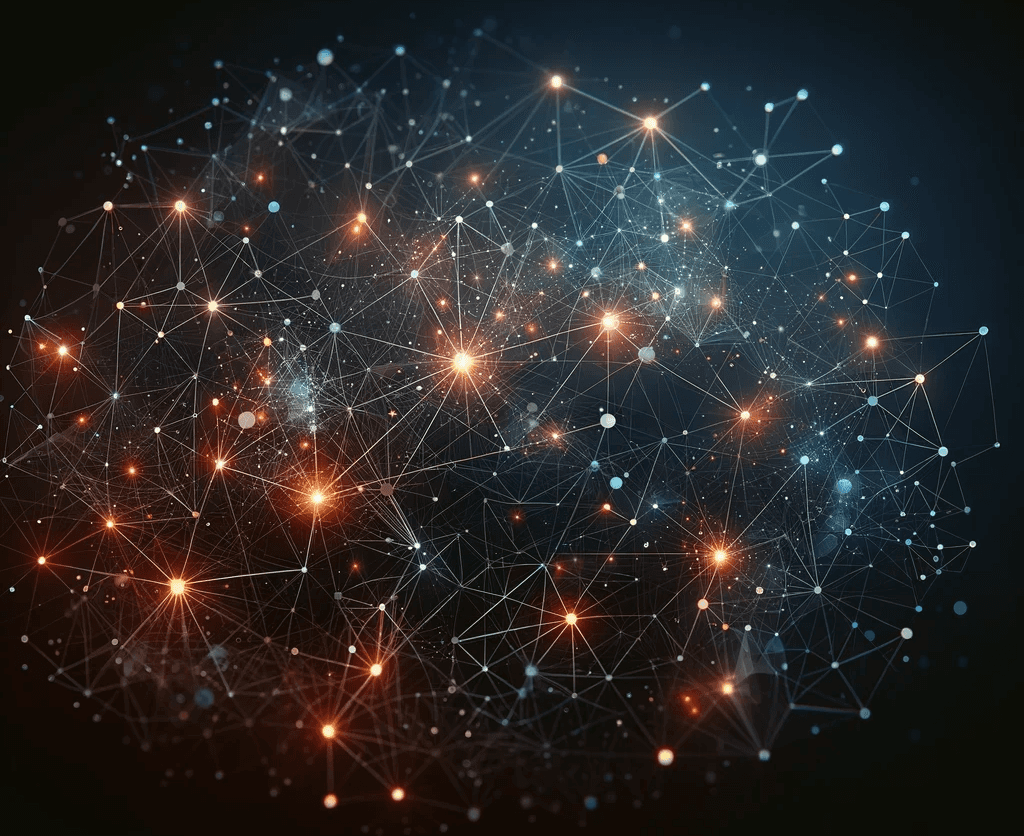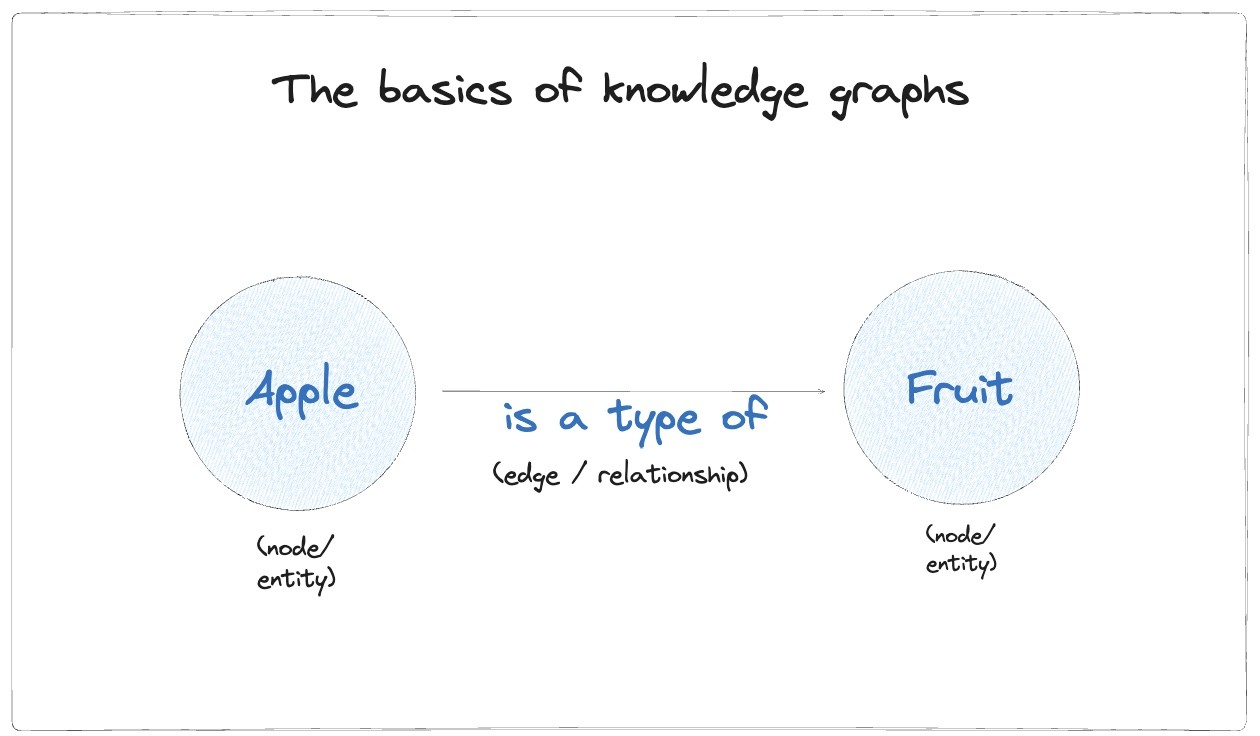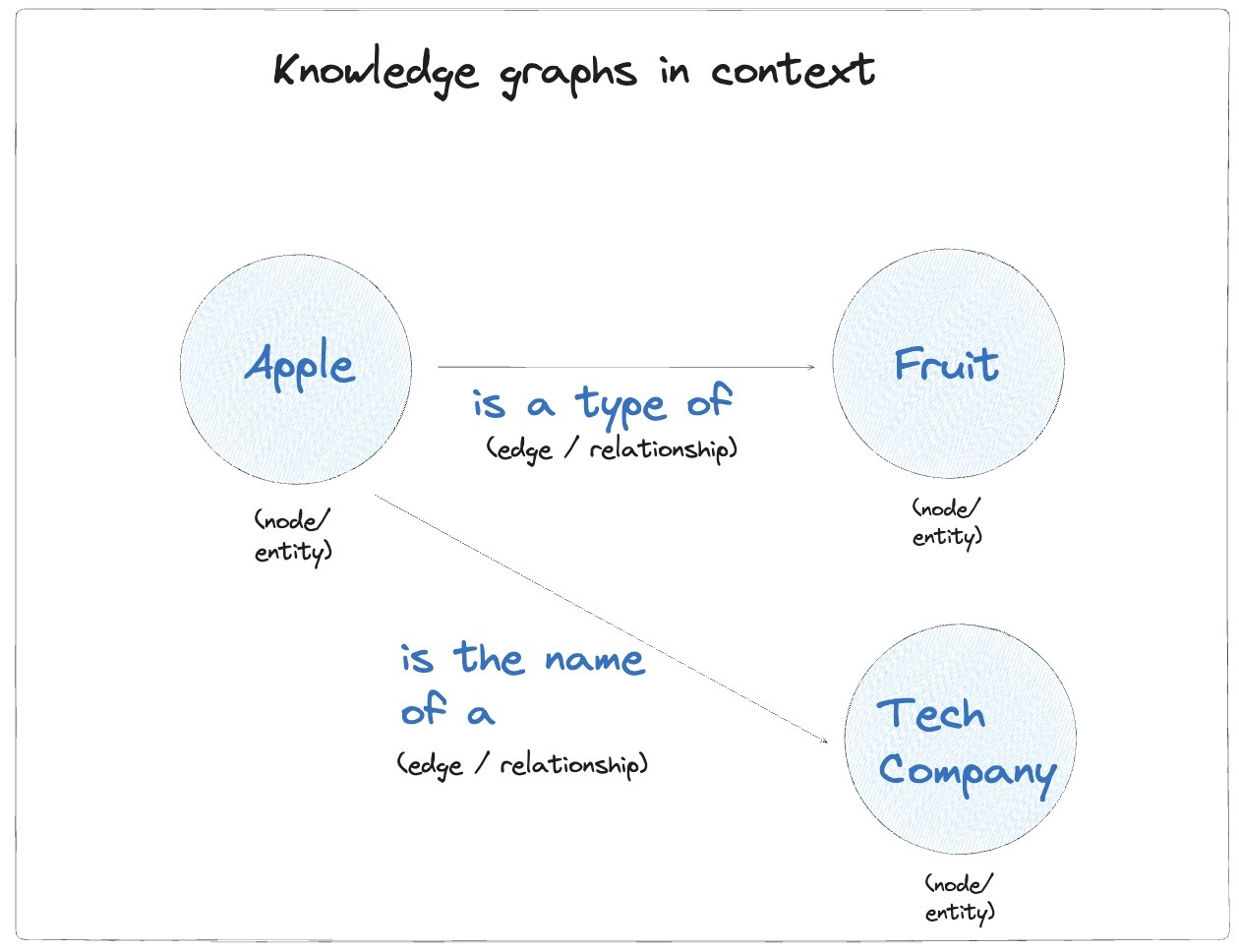What is a knowledge graph?
In this blog post, we introduce the concept of a knowledge graph and why it is relevant for building AI tools and applications. If you are a business that is looking to deploy AI models in production, it is helpful to familiarize yourself with this concept.
Feb 12, 2024

If you've been experimenting with ChatGPT or any other AI tools, you know it's not perfect. They have these "hallucinations"; which can be amusing in casual use, but pose a serious concern if you want to deploy it in enterprise applications. That's where the precise architecture of knowledge graphs comes in.
The basics
When you dive into YouTube, ever wondered how it effortlessly recommends videos that catch your interest, sometimes even before you realize you're interested in them? This magic is powered by a technology Google uses extensively: the knowledge graph.
A knowledge graph is a dynamic data structure that maps relationships between entities (like people, places, and things) in a contextual network, facilitating a deeper understanding of data connections. Common terms include "nodes" (entities), "edges" (relationships), and "triples" (entity-relationship-entity statements).

For instance, consider the entity "Apple." In one context, "Apple" could be connected to "Fruit" through the relationship "is a type of," highlighting its role in the food category. However, in a different context, "Apple" could link to "Technology Company" via "is an example of," representing its significance in the tech industry. This ability to differentiate between contexts based on the relationships and entities involved enables knowledge graphs to provide nuanced insights and understandings tailored to the specific domain or inquiry at hand.

Why are knowledge graphs relevant for AI?
In the realm of artificial intelligence, knowledge graphs are not just a repository of data points. They are the foundational framework that enables AI to process information much like a human does—by understanding the rich tapestry of relationships between those data points. Here's why knowledge graphs are indispensable to the evolution of AI:
Contextual Understanding: Knowledge graphs allow AI to interpret context, which is pivotal for generating responses that are not just accurate but contextually relevant.
Enhanced Content Generation: For Generative AI, which is tasked with creating new content, knowledge graphs provide the necessary depth of knowledge and relational understanding, fostering more accurate and nuanced outputs.
Reduction in AI "Hallucinations": By grounding the AI in structured reality, knowledge graphs help prevent the generation of plausible but incorrect or irrelevant information, a common pitfall in AI without such a framework.
Customizable AI Applications: Knowledge graphs enable businesses to tailor AI to their specific needs. They can be adjusted to reflect unique business domains, operational specifics, and the particular context of an organization.
Dynamic Learning: As new information is acquired, knowledge graphs evolve, allowing AI to continually update its understanding and improve its interactions over time.
Imagine an AI in the retail sector that can recommend products to customers not just based on their past purchases, but by understanding the complex web of their preferences, seasonal trends, and even current events influencing consumer behavior. Or consider a media recommendation engine that not only suggests movies and shows based on what you've watched before but also integrates critics’ reviews, awards won, and social media trends to present you with options that feel surprisingly personal and timely.
This is the kind of intuitive, responsive service that knowledge graphs are making possible in AI today. They serve as the intricate framework that empowers AI to provide a tailored and adaptive experience to every user, transforming our interaction with technology from transactional to conversational, impersonal to highly personalized.
What is challenging about knowledge graphs?
Knowledge graphs are a transformative force in the AI landscape, but they don’t come without their challenges. Here’s why you might consider partnering with an expert like HedwigAI to navigate this complex terrain:
Complex Data Integration: Knowledge graphs require the integration of various data sources, which can be a complex task given the heterogeneity and volume of data.
Contextual Understanding: Building a graph that accurately reflects real-world contexts and relationships demands a deep understanding of the domain in question.
Maintenance and Scalability: As your business grows, your knowledge graph must evolve. Ensuring its scalability and maintaining its accuracy over time requires expertise.
Real-Time Processing: For a knowledge graph to be truly effective, it should process information in real-time, which is a significant technical challenge.
Quality and Accuracy: The usefulness of a knowledge graph is only as good as the data it contains. Ensuring high data quality and accuracy is a continuous challenge.
Not to worry through, at Hedwig AI, this is what we breathe in everyday. We have an easy to implement software development kit (SDK) that enables deploying and maintaining knowledge graphs as simple as implementing a button in Tailwind CSS :)
Click here to book a conversation and we can discuss how we can help you get started today.